Arnie Ginsburg: The Original Dean
By Mark A. Moore
Author of Dead Man’s Curve: The Rock ‘n’ Roll Life of Jan Berry
One of the most frequently asked questions I get is . . . What happened to Jan Berry’s first professional partner? What happened to Arnie Ginsburg, and why did he leave the act by January 1959?
The short answer is, Arnie would have left by necessity . . . but he also wanted out.
Arnold P. Ginsburg was a Wisconsin native who grew up in West Los Angeles. Like Jan Berry, Arnie was a product of the West Side. While Jan hailed from the hills of Bel Air, Arnie lived in the Sawtelle district. The two became friends while attending University High School, whose beautiful campus sat on Texas Avenue south of Wilshire Boulevard. They were both members of the Barons, a “tough” and popular Hi-Y school club.

Arnie was a good-looking Jewish kid who sported six-pack abs when he took his shirt off at the beach. Jan Berry may have risen to fame with talented girlfriend Jill Gibson by his side, but Jill dated Arnie first . . . before she dated Jan.
Arnie loved music and he loved to dance. When Jan formed a vocal group in 1957 called the Barons, named after the Hi-Y club, Arnie became a founding member. Others in the group included Dean Torrence, John Seligman, Wally Yagi, and Chuck Steele.
Arnie was around from day one as part of Jan’s party and garage studio scene at Eleven-Eleven Linda Flora Drive in Bel Air—one of the birthplaces of California Rock. With the Barons on vocals, Jan’s neighborhood friend and future Beach Boys member Bruce Johnston would often sit in on piano. And Sandy Nelson, of future “Teen Beat” fame, would participate on drums.
Berry and Ginsburg began writing original songs together, and their first collaboration was “Jennie Lee.” They performed at parties and school assemblies with the Barons, but the two often recorded on their own in Jan’s garage studio. They recorded “Jennie Lee” at Linda Flora on Jan’s legendary state-of-the-art Ampex tape machine—complete with echo effect. Jan played piano and sang bass while Arnie sang lead and banged out the improvised percussion.
They took their tape to United Recording at Sunset and Gower to cut an acetate disc, a next logical step in their view. They wanted their own “record.” Joe Lubin, an A&R (artists and repertoire) executive with Marty Melcher’s Arwin Records in Beverly Hills, had been working on a Gordon MacRae record that day. On his way out of the building Joe overheard Jan & Arnie’s raw recording in the studio—and the rest is history.
Joe took the guys back up to the Linda Flora garage studio and supervised a re-recording of “Jennie Lee,” matching the same process Jan & Arnie had used originally.
In March 1958—the same month Dean Torrence went on active duty with the U.S. Army Reserve—Berry and Ginsburg signed preliminary artist contracts with Lubin. Joe then gave Marty Melcher the hard sell, and Jan & Arnie became recording artists for Arwin Records.
Lubin hired the best R&B musicians available to augment the basic track for Jan & Arnie’s “Jennie Lee,” setting Jan Berry on his momentous path within the Hollywood studio system. The final version was cut at Master Recorders on Fairfax Avenue, with Earl Palmer on drums, Ernie Freeman on keyboards, Rene Hall on guitar, and Plas Johnson on saxophone, among others. The overdub session was overseen by veteran arranger and composer Don Ralke, but Ernie Freeman worked his magic in syncing the piano-and-vocal track with the musicians.
Released in April 1958 “Jennie Lee” was a blockbuster hit nationally, reaching #3 on Cash Box, #4 R&B, and #8 on the Billboard charts in June. In 1965 Jan Berry told KRLA Beat that “Jennie Lee” had been written about a well-known buxom Burlesque performer of the same name—“The Bazoom Girl,” “Miss Forty-Four and Plenty More”—who often did shows in L.A. To this day, however, Arnie Ginsburg disputes the stripper story.

Jan & Arnie sounded black, with a raw and raucous R&B delivery. Though “Jennie Lee” was a smash, distribution for the single had been a one-off deal with Randy Wood and Dot Records, facilitated by Joe Lubin.
Without a similar deal for distribution, Jan & Arnie’s follow-up single “Gas Money”—a better composition and production and one of the first California car songs—only reached #81 nationally.
Why?
Why would Dot seemingly walk away when Jan & Arnie’s debut single had been so successful?
The answer was made public by the Santa Monica Evening Outlook in April 1958, a mere week after the release of “Jennie Lee.” Arnie had a forthcoming military commitment. Having been enrolled in Junior ROTC (Reserve Officers Training Corps) in high school, Arnie had been a member of the U.S. Naval Reserve since May 1957.
Nevertheless, the remainder of 1958 was an eventful time for Jan & Arnie. All six sides of their three singles for Arwin Records were co-written by Berry and Ginsburg—and Arnie sang lead on all six. They made their national television debut on the Dick Clark Saturday Night Beechnut Show in May. Arnie graduated from Uni High in June, the same month Jan & Arnie performed at the Pasadena Civic Auditorium and Long Beach Drive-In. In July the duo joined an East Coast “Summer Dance Party” tour with Frankie Avalon, Link Wray, and the Kalin Twins—including a show in Canada. They performed a second time on the Dick Clark Show. In August they joined a tour in Northern California with Sam Cooke, performed at the first Rock ‘n Roll show ever held at the Hollywood Bowl, and appeared locally on KABC-TV’s Country America, hosted by country music songwriter, producer, and future Liberty Records staffer Joe Allison.

It was on the Sam Cooke tour that Jan Berry first crossed paths with Lou Adler and Herb Alpert, who were then learning the ropes of the music business while working for Robert “Bumps” Blackwell and Keen Records.
Jan & Arnie performed with Ritchie Valens at the Los Angeles County Fair in September, with Jan’s old neighborhood friend Bruce Johnston playing piano in the house band. The duo returned to national television in October with an appearance on The Jack Benny Program, performing “The Beat that Can’t Be Beat.”
By the end of the year, despite Jan & Arnie’s success, Ginsburg had become disillusioned with the music business. Aside from questioning his own talent—which weighed heavily on his mind—he was disturbed by the drug use he witnessed during the Sam Cooke tour. In general, Arnie didn’t like the pressure of the business and he didn’t buy the hype.

Looking ahead to his “real” future, Arnie was ready to move on by the end of 1958. To help ease the transition he did one last favor for producer Joe Lubin. Arnie sang lead on a song called “Girl In Zanzibar” for a group called the Rituals, released on Arwin Records in January 1959.
After that, Arnie happily left the music business with no regrets—and never looked back. Jan Berry chose his friend Dean Torrence to continue making music—and for the second time, the rest was history.
Arnie went on active duty with the U.S. Navy in May 1959, the same month that Jan & Dean’s first single “Baby Talk” debuted. Upon discharge from the service in February 1961, Arnie returned to Los Angeles and prepared to further his education. He enrolled in Santa Monica City College before transferring to the University of Southern California (USC), where he was accepted into the school of architecture and found his true calling.
All through their college days, during the height of Jan & Dean’s success, Arnie Ginsburg and Dean Torrence were classmates at USC, where Dean studied advertising design. Jan & Dean’s fame never fazed Arnie in the slightest. He had stopped listening to Rock ‘n Roll and became a devotee of jazz music—a “jazzbo.” John Coltrane and Thelonious Monk were among his go-to artists. It was Dean who first brought Arnie’s attention to a new Rock ‘n Roll phenomenon known as the Beatles in 1964.
Arnie graduated from USC with a degree in industrial design. He got a job in Russia through a cultural exchange program (his grandparents on both sides were native Russians) and served as an information officer for the U.S. Government. He returned to the states after six months and worked in product design before becoming a highly successful architect.
These days Arnie (“Arn”) rarely talks about his time with Jan Berry and Jan & Arnie. But the year 1958 marked the genesis of Jan Berry’s development as a songwriter, arranger, and record producer. And in sharing his memories for The Jan & Dean Record, Arnie shed some crucial light on the birth of California Rock.
“I need some Gas Money.”

© Mark A. Moore. All rights reserved.
Follow in Social Media: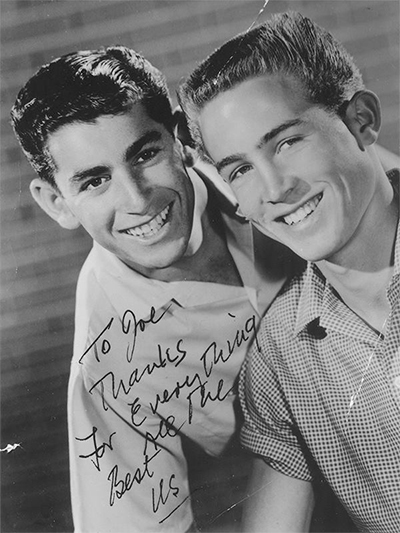

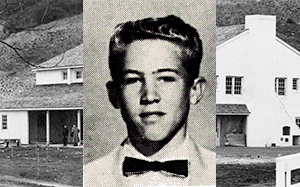
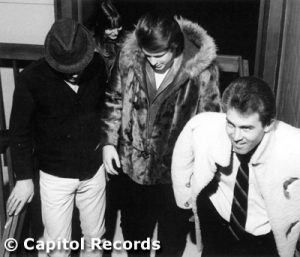
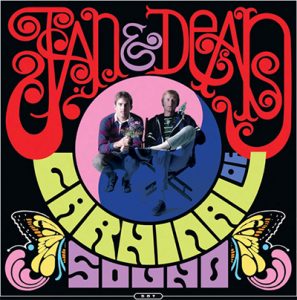
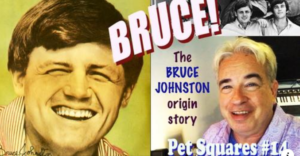
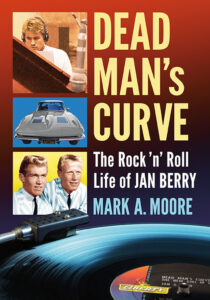
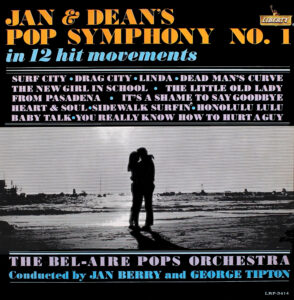
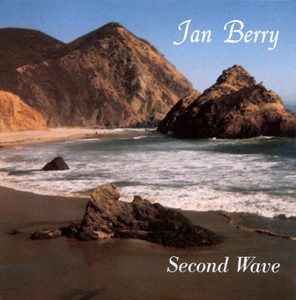
I was looking through the 45’s in this little record store in Toronto,Canada in the summer of 1985 and lo and behold here was a brand new copy of one of the ten 45’s on my bucket list to find.Arwin label,black and white of Jan and Arnie backed by the Ross Adams Orchestra of ‘Gas Money’ and ‘Bonnie Lou’.Needless to say it’s one of my prized records after fifty years of collectin VINYL…!!!
While I was living in the Sawtelle area of West L.A. from 1957 to 1963, I met a guy who told me that before there was Jan and Dean there was Jan and Arnie, and he was Arnie.
I worked at Chuck Morgan Chevron at the corner of Westwood and National, which was probably where we met. Thanks for the name and background of that guy. It’s nice to tie up loose ends after 60 years or so.
For anyone interested in Jack Benny, try the International Jack Benny Fan Club at: http://www.jackbenny.org/ .
This article was most interesting and informative. I recently became aware of Jan and Arnie through 50s on 5, Sirius-XM! As a true-blue Baby Boomer, so many memories comes from my AM-transistor radio!
Thanks Mark! Great article! I would love it if someone released the Jack Benny footage on YouTube.
Yes. The footage of Jan & Arnie on the Jack Benny Program can be viewed in person at UCLA.
Is there any footage of Jan and Arnie still around?
Fantastic article Mark!